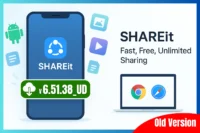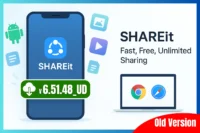SHAREit APK Popularity Analysis in India: Post-Ban Persistence
Published: 25 Jul 2025
Executive Summary
SHAREit remains popular in India despite being banned in 2020. This is mainly because many people are already familiar with it, it’s easy to use, and there are ways to download it outside of the official app stores. This discussion examines why many people continue to use SHAREit and what that might mean for the future.
Background: The 2020 Ban Context
In June 2020, the Indian government decided to ban SHAREit, along with 58 other Chinese apps. This action was taken for several reasons, including:
- Data security and privacy concerns
- National sovereignty issues
- Geopolitical tensions with China following border conflicts
Pre-Ban Statistics:
- Over 400-500 million users in India
- The third most active app after WhatsApp and Facebook
- Strong presence in tier-II and tier-III cities
- Part of 1.8 billion global users
Key Factors Behind Continued Popularity
1. Massive Pre-Existing User Base
- Network Effect: File sharing requires both the sender and receiver to have the app
- Established Ecosystem: Users are reluctant to switch due to familiarity
- Coordination Problem: Easier to continue using the existing app than coordinating group migration
2. Technical Advantages
- Offline Functionality: Peer-to-peer transfers via Wi-Fi Direct without internet
- High-Speed Transfers: Up to 480 Mbps transfer speeds
- Cross-Platform Compatibility: Works across Android, iOS, and Windows
- Considerable File Support: Efficient handling of HD videos, games, and multimedia content
3. APK Availability and Workarounds
- Third-Party Sources: Available through APKMirror, APKPure, and similar platforms
- Direct Sharing: APK files shared phone-to-phone using SHAREit itself
- Sideloading: Tech-savvy users can easily install via APK files
- Limited Enforcement: Ban focused on app stores, not individual Device usage
4. Market Gap
- Lack of Perfect Alternatives: No single app offered an identical feature combination
- Fragmented Replacement Market: Users are scattered across multiple alternatives
- Feature Preferences: Existing alternatives didn’t match SHAREit’s speed and simplicity
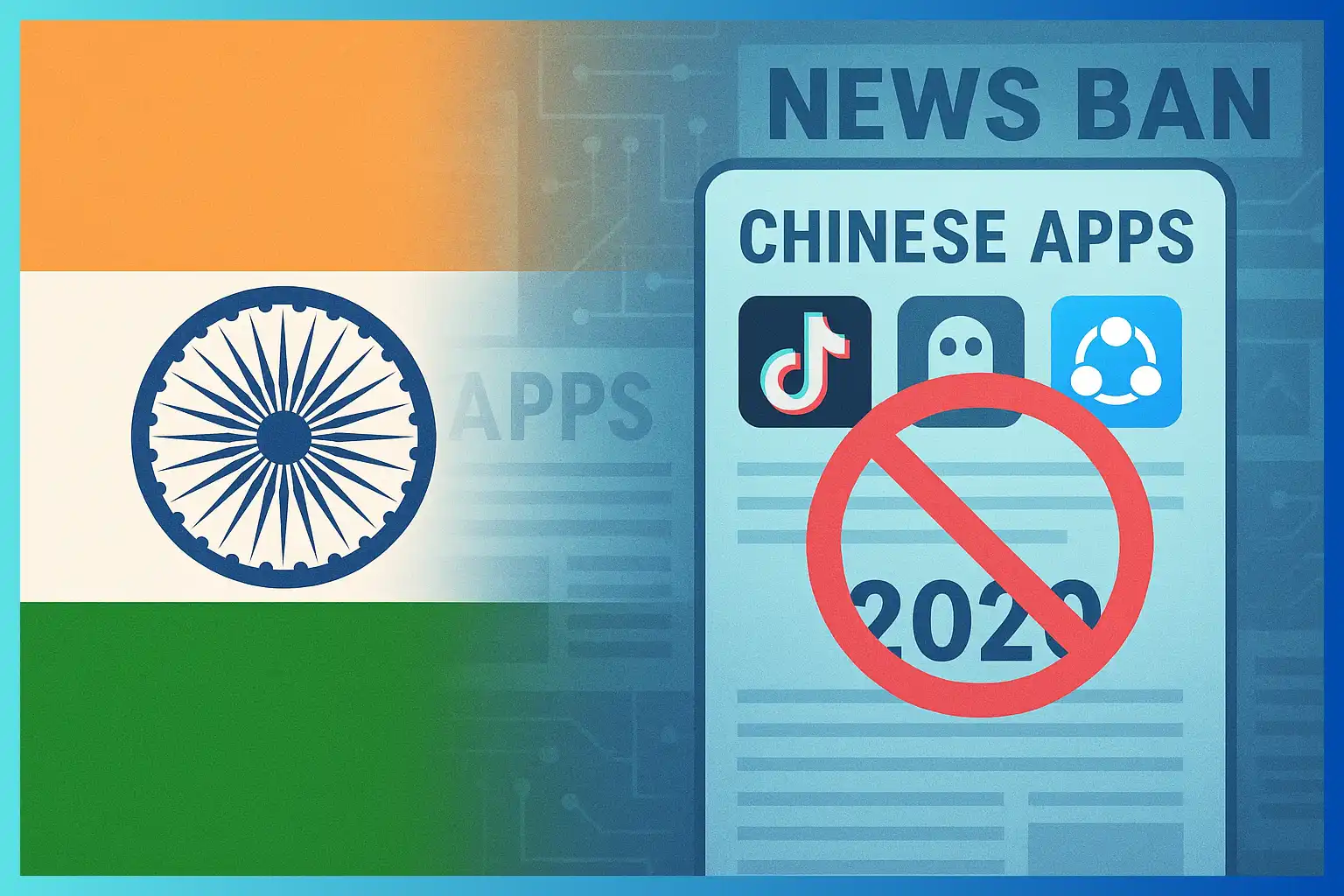
Pros and Cons Analysis
Advantages of Continued SHAREit Usage
Pros:
- Zero Data Consumption: No internet required for file transfers
- Superior Speed: Faster than Bluetooth and many alternatives
- Cost-Effective: Valuable in regions with expensive or unreliable data
- User Familiarity: No learning curve for existing users
- Versatile Platform: Supports multiple file types and devices
- Multimedia Features: Integrated entertainment options (videos, music, games)
Disadvantages and Risks
Cons:
- Security Vulnerabilities: Potential remote code execution and data leaks
- Privacy Concerns: Unauthorised data transmission to external servers
- Legal Grey Area: Using banned apps goes against government directives
- Malware Risk: APKs from unofficial sources may contain malicious code
- No Official Updates: Lack of security patches and compatibility fixes
- Outdated Versions: Sideloaded versions may lack critical security updates
Current Status and Alternatives
Current Status (July 2025)
The app is not yet available on the Google Play Store or the Apple App Store. There have been no official attempts to resolve privacy issues specific to India. Users are facing limited features because the app has not received any updates in a while. Additionally, the website is reportedly not working correctly due to compatibility problems.
Recommended Alternatives for File Sharing
Here are some easy-to-use apps that let you share files with others:
1. Files by Google
- Developer: Google
- Key Features: Easily share files nearby, transfer files without an internet connection, and manage your files efficiently.
- Where to Get It: Available on the Play Store.
2. JioSwitch
- Developer: Reliance Jio
- Key Features: Fast file transfers, developed in India.
- Where to Get It: Available on the Play Store.
3. ShareAll
- Developer: Various
- Key Features: Share files across different platforms (like Android and iOS).
- Where to Get It: Available on the Play Store.
4. Send Anywhere
- Developer: ESTmob
- Key Features: Transfer files securely and through a simple web interface.
- Where to Get It: Available on the Play Store.
5. Snapdrop
- Developer: N/A (Web-based)
- Key Features: A web-based tool that doesn’t need an app; use it in your web browser.
- Where to Get It: Access it online.
6. ShareMe (Mi Drop)
- Developer: Xiaomi
- Key Features: Similar to SHAREit, it offers easy file sharing.
- Where to Get It: Available on the Play Store.
These options provide a great way to share files easily and quickly without needing to understand complicated technology!
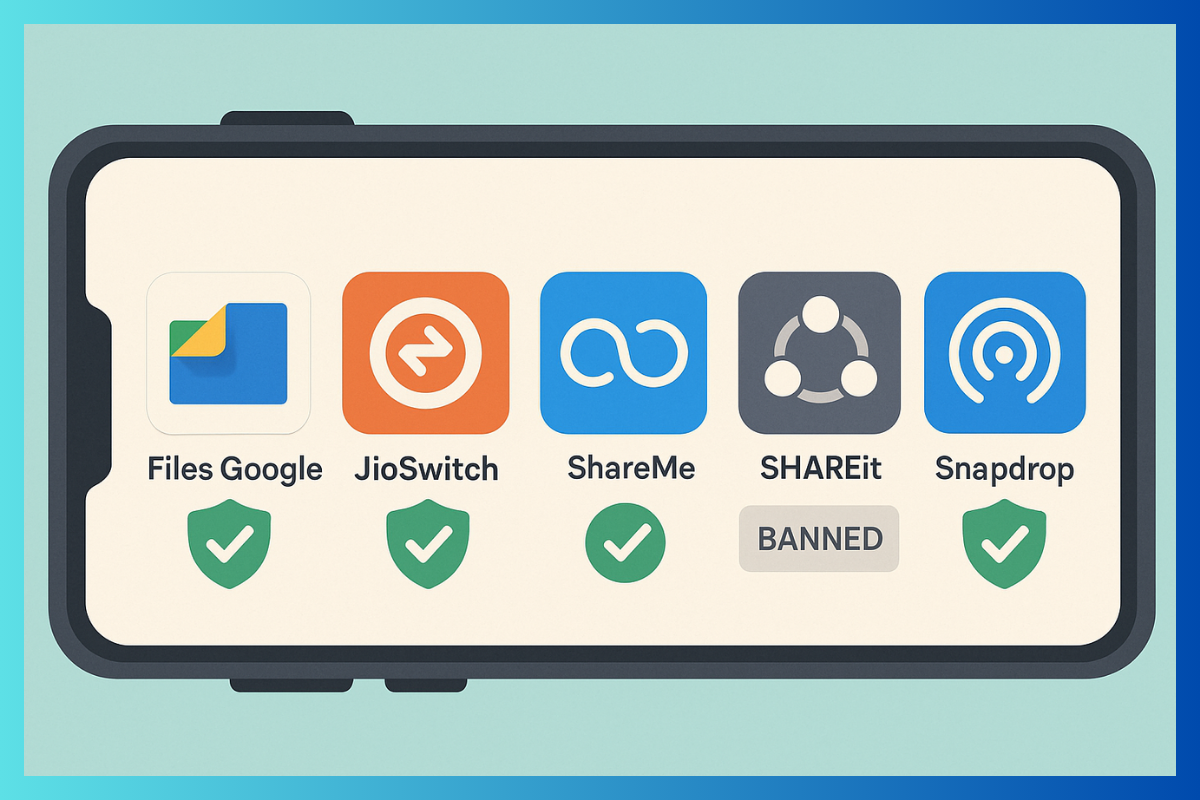
User Demographics and Usage Patterns
Primary User Categories:
- Rural and Semi-Urban Users: Limited internet access, cost-conscious
- Students and Young Professionals: Frequent significant file sharing needs
- Small Business Owners: Quick document and media sharing requirements
- Tech-Savvy Users: Comfortable with APK sideloading
Usage Scenarios:
- Sharing educational content and study materials
- Transferring multimedia files (photos, videos, music)
- Distributing APK files and software
- Business document exchanges
- Entertainment content sharing
Enforcement Challenges
Government Limitations:
- Technical Constraints: Difficulty in blocking peer-to-peer offline functionality
- Enforcement Scope: Ban limited to app stores, not individual usage
- Resource Allocation: It is Impractical to monitor millions of individual devices
- User Compliance: Relies on voluntary adherence to government directives
Workaround Methods:
- VPN usage to access restricted content
- APK sharing through alternative file-sharing methods
- Third-party app store usage
- Direct installation from unofficial sources
Recommendations
For Users:
- Migrate to Legal Alternatives: Adopt officially available apps like Files by Google or JioSwitch
- Prioritise Security: Avoid downloading APKs from unofficial sources
- Stay Updated: Use apps that receive regular security updates
- Respect Regulations: Comply with government directives on banned applications
For Policymakers:
- Strengthen Enforcement: Develop more comprehensive blocking mechanisms
- Promote Alternatives: Support the development of indigenous file-sharing solutions
- User Education: Increase awareness about security risks and legal alternatives
- Regular Assessment: Monitor the effectiveness of app bans and adjust strategies
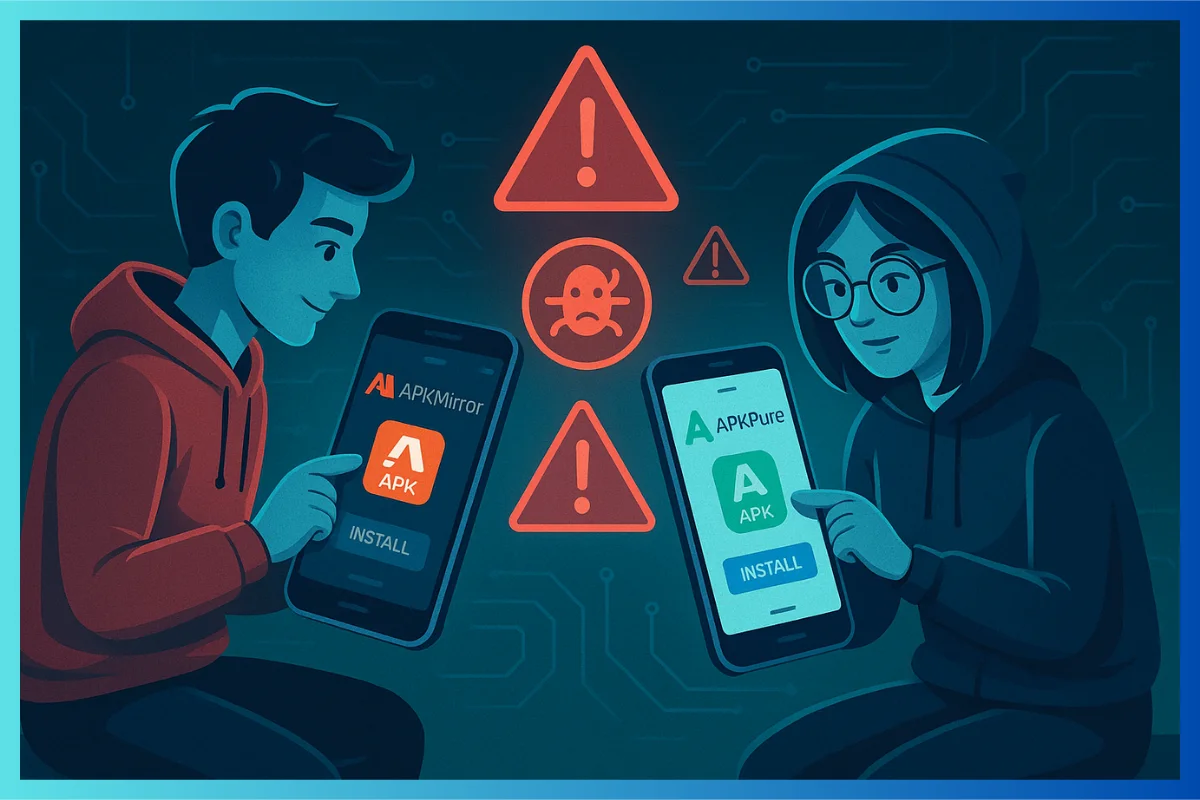
Conclusion
SHAREit’s ongoing popularity in India, even after its ban in 2020, demonstrates how user preferences and technology can sometimes conflict with government regulations. Many people still use the app because it enables them to share files without an internet connection and boasts a large user base. However, concerns about security and legal issues exist, which is why users should consider switching to approved alternatives.
There are safer options, such as Files by Google and JioSwitch, that meet people’s file-sharing needs while also complying with the law and keeping data secure. This situation highlights the importance of establishing clear guidelines for digital tools that prioritise users’ convenience and safety.

- Be Respectful
- Stay Relevant
- Stay Positive
- True Feedback
- Encourage Discussion
- Avoid Spamming
- No Fake News
- Don't Copy-Paste
- No Personal Attacks

- Be Respectful
- Stay Relevant
- Stay Positive
- True Feedback
- Encourage Discussion
- Avoid Spamming
- No Fake News
- Don't Copy-Paste
- No Personal Attacks
